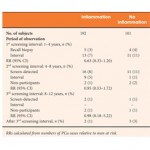Comparison of candidate scaffolds for tissue engineering for stress urinary incontinence and pelvic organ prolapse repair
Sir,
In the Mangera et al. [1] study various natural and synthetic scaffold materials, potentially applicable for tissue engineering purposes, were carefully compared. Primarily these materials were investigated for their suitability, when seeded with cultured oral fibroblasts, as an in vivo tissue-engineering approach to treat, by restoring the pelvic floor tissue structure, women with pelvic organ prolapse or those with stress urinary incontinence (SUI). Two potential candidate biodegradable scaffold materials were identified to treat these women’s pathological conditions, synthetic poly(L) lactic acid (PLA) and natural small intestinal submucosa (SIS), as they supported good cell attachment and proliferation, and had biomechanical features of the native pelvic floor.
The effectiveness of PLA and SIS as scaffold materials in other tissue engineering areas has been documented since the 1990s, e.g. to obtain a tissue-engineered bladder [2,3]. Recent advances in the preparation of synthetic polymeric scaffolds have shown that electrospun polyethylene terephthalate and polyurethane, given their fibrous microarchitecture similar to extracellular matrix (ECM), can favourably support cell adhesion/growth without the need of co-acting them with ECM-derived proteins [4,5].
Among the complex problems, from bench-to-bedside, concerning the biomechanical and dynamic requirements of a tissue-engineered structure to treat SUI, the main one is its potential for a quick and durable response to the neuronal mechanisms involved in the urinary continence guarding reflex towards sudden increases in intra-abdominal pressure. Indeed, the pontine storage centre-dependent spinal glutamatergic signalling induces the activation of sacral Onuf’s nucleus pudendal motoneurones, that, in turn, promote the acetylcholine-supported stimulation of pelvic floor striated muscle/urethral rhabdosphincter nicotinic receptors, thus efficaciously supporting the ‘guarding reflex’ [6–8].
Presumably the Authors [1], in the course of experimentation, have taken into consideration the response of their tissue-engineered structure to such guarding reflex-related neuromuscular mechanisms; however, this was not discussed in their article.
Contardo Alberti
Surgical Semeiotics, University of Parma, Parma, Italy
References
- Mangera A, Bullock AJ, Roman S, Chapple CR, MacNeil S. Comparison of candidate scaffolds for tissue engineering for stress urinary incontinence and pelvic organ prolapse repair. BJU Int 2013; 112: 674–85
- Atala A, Vacanti JP, Peters CA, Madnell J, Retik AB, Freeman MR. Formation of urothelial structures in vivo from dissociated cells attached to biodegradable polymer scaffold in vitro. J Urol 1992; 148: 658–62
- Oberpenning FO, Meng J, Yoo J, Atala A. De novo reconstruction of a functional urinary bladder by tissue-engineering. Nat Biotechnol 1999; 17: 149-155
- Del Gaudio C, Baiguera S, Ajalloueian F, Bianco A, Macchiarini P. Are synthetic scaffolds suitable for the development of clinical tissue-engineered tubular organs? J Biomed Mater Res A 2013 [Epub ahead of print]. DOI: 10.1002/jbm.a.34883.
- Alberti C. Tissue engineering as innovative chance for organ replacement in radical tumor surgery. Eur Rev Med Pharmacol Sci 2013; 17: 624–31
- Blok BF, Holstege G. The central control of micturition and continence: implications for urology. BJU Int 1999; 83 (Suppl. 2): 1–6
- Kitta T, Miyazato M, Chancellor MB, de Groat W, Nonomura K, Yoshimura N. α2-adrenoceptor blockade potentiates the effect of duloxetine on sneeze induced urethral continence reflex in rats. J Urol 2010; 184: 762–8
- Alberti C. Coadministration of low-dose serotonin/noradrenaline reuptake inhibitor (SNRI) duloxetine with α 2-adrenoceptor blockers to treat both female and male mild-to-moderate stress urinary incontinence (SUI). G Chir 2013; 34:189–94.



Sir,
We thank Dr Alberti for his interest in our scientific paper published in BJUI [1], which investigated seven candidate scaffolds which may be used to create a tissue engineered prosthesis for use in stress urinary incontinence (SUI) and pelvic organ prolapse surgery.
In his letter, Dr Alberti proposes that the guarding reflex is important in maintaining continence in women with SUI. We agree that the guarding reflex is important in the maintenance of continence. However, as reported by Park et al., it is unlikely to be as important in the maintenance of continence as the smooth muscle in the urethra [2]. Therefore the concepts of intrinsic sphincteric deficiency and urethral hypermobility have been proposed as the most important factors in the aetiogenesis of SUI [3]. Consequently, these are targeted for surgical correction.
The surgical treatment options to treat a weakened urethral rhabdosphincter are currently limited. Methods to regenerate the urethral sphincter have involved the transurethral and periurethral injection of muscle derived stem cells (MDSC). These approaches have been piloted in small numbers of patients with varying results. Stangel-Wojcikiewicz et al. reported a 75% complete or partial improvement rate after circumferential injections of MDSC in 16 women at two years follow-up and Carr et al. showed improvement in five out of eight women at a median of 17 months follow-up [4] [5]. These studies are still in their infancy and we are not aware of any data showing functional sphincteric recovery.
Furthermore, the most common surgical treatment options utilised in treating SUI, such as pubovaginal slings and mid-urethral tapes, aim to correct deficiencies in hypermobility and intrinsic sphincteric deficiency with varying success and complication rates. Our proposed tissue engineered mesh would work in a similar manner to an autologous pubovaginal sling (which has good medium term success rates without impacting upon the guarding reflex). It would potentially not carry the risk of erosion which is being seen more often with synthetic tapes. The key differences with the tissue engineered sling are reduced donor site morbidity and the ability to modulate the biomechanical properties of the sling prior to implantation. This formed the basis of our study and is why the same material used for tissue engineered bladder would not be feasible for the pelvic floor. In this first study, we used fibroblasts, however, in a subsequent study we found that equivalent results were obtained with adipose derived mesenchymal stromal cells (ADMSC) [6]. The use of ADMSC is attractive because of their relative ease of access from lipoaspirate and also because they have the potential to differentiate into muscle cells which may impact on the urethral sphincteric mechanism and the guarding reflex, but this clearly requires further study.
Altaf Mangera
On behalf of the authors
University of Sheffield and Sheffield Teaching Hospitals NHS Trust, Royal Hallamshire Hospital, Sheffield, UK
References